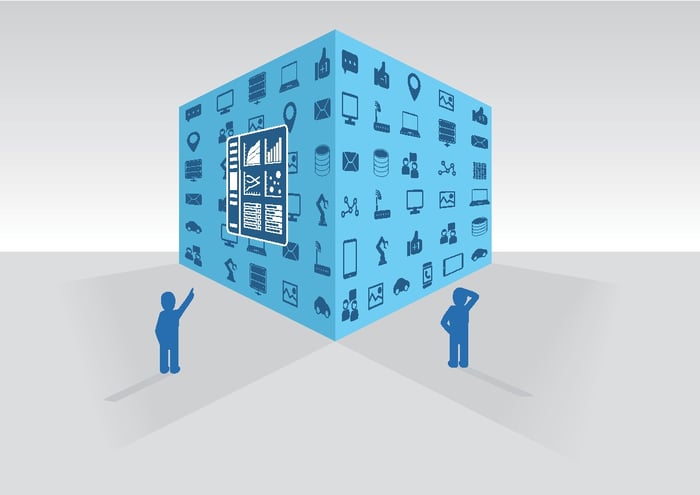The large amount of heterogeneous data accumulated by the institutions represents one of the reasons why companies need technology that enables them to quickly perform complex analyzes about this data. Because relational databases are ineffective, from this point of view A new concept is needed, the concept of multidimensional database..
Every year a large volume of information accumulates in any organization. The heads of the different departments must periodically prepare reports that summarize the information accumulated in the different periods and to help this work., a multidimensional database where this information is stored to streamline your activity.
Let's look at the concept of a multidimensional database and their characteristics, as well as a comparison with relational databases and their main advantages and disadvantages.
Concept and characteristics of a multidimensional database
A multidimensional database represents a type of database where data is stored in cells and each cell position is set by a series of variables called dimensions. Each cell signifies a business event and the dimension values indicate the time and place where the event occurs. You can find it with different synonyms like Cube, hypercube, OLAP cubo, OLAP database or multidimensional data warehouse. Even though logically a multidimensional database looks like a cube, is physically stored as a compressed multidimensional array with offset positioning.
The data model Regarding a multidimensional database design, it is the multidimensional data model that contains fact tables with measure type attributes and dimension tables with descriptive attributes.. Members of dimension tables can be organized into hierarchies.
Comparative analysis between multidimensional databases and relational databases
In reality you cannot say that a certain type of database is much better than another or that relational databases are totally out of date. Both types of databases have advantages and disadvantages and it is essential to identify the situations in which a certain type of database is suitable for use..
The main differences between these two types of databases son:
- Multidimensional database:
- Data organization: multidimensional data array, cells, dimensions, fact tables.
- Data level: detailed data and aggregated data.
- Typical operations: analysis.
- Language for inquiries: MDX.
- Disk space usage: low.
- Performance: good.
- Flexibility: little.
- Data processing time: alto.
- Scalability: little.
- Design scope: limited.
- Access to data: supports direct data access.
- Relational database:
- Data organization: boards.
- Data level: detailed data.
- Typical operations: Upgrades.
- Language for inquiries: SQL.
- Disk space usage: great.
- Performance: weak.
- Flexibility: high.
- Data processing time: low.
- Scalability: high.
- Design scope: very big.
- Access to data: enables indirect access to data.
How can you see in the above data, The multidimensional database stores both detailed data and aggregated data in multidimensional array format that is used especially for data analysis applications... Unlike them, in the relational database the data is stored in tables. The relational database represents the key element in traditional transaction processing systems.
During the decade of 1990 and early 2000, there was a single query language for relational databases. This language is SQL language. In 1997, Microsoft developed the language of Multidimensional Expressions (MDX) as part of the OLE DB specialization for Olap specifications. From 2001, XML for Analysis (XMLA) has become the standard for entering OLAP data, thus also standardizing the MDX language.
Advantages and disadvantages of a multidimensional database
A multidimensional database has several advantages:
- Uses a less disk space because it is compressed and does not use indexing to search for data.
- Has better presentation customer service needs, since the aggregated data is pre-calculated and the storage format reduces the number of input and output operations.
- Guarantees a superior performance because they are modeled taking into account only the requirements of a single group of users.
- Supports direct access, efficient and fast to the data.
But nevertheless, a multidimensional database also has disadvantages:
- The data processing time is high since aggregated data must be recalculated when operational data sources are updated.
- Scalability decreases as the number of dimensions increases or when the database is very large.
- The flexibility of a multidimensional database is very low.
- Design scope is limitedTherefore, as the number of user groups increases whose requirements must be taken into account, the model runs the risk of failing.







